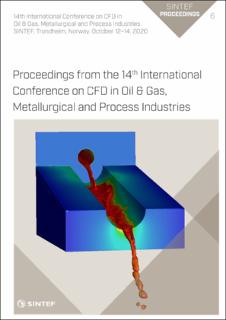| dc.description.abstract | Oil & Gas plants are complex systems involving dangerous substances, potential origin of severe accidental scenarios. Therefore, according to Directive 2013/30/EU, a Risk Assessment (RA) is mandatory. A fundamental step of the RA is the accident simulation to evaluate the damage area involved by each accidental scenario. One of the main issues of natural gas extraction platforms is the presence of traces of hydrogen sulfide (H2S) in the extracted mixture. When the H2S is present in the natural gas, the mixture is called sour gas. The presence of H2S is of great interest since it is flammable, colorless and highly toxic, therefore, highly dangerous to people. Several literature studies demonstrate that it is common to have mixtures with 2 % to 20 % by weight H2S in Oil & Gas facilities reservoirs, underlying how this problem is of common interest. In this work a highly pressurized (50 bar) accidental release of a methane-hydrogen sulfide mixture (95 % CH4 – 5 % H2S) in the production deck of an Oil & Gas platform is treated. Due to the complexity of the geometry and the need to accurately define the dangerous areas, the Computational Fluid Dynamics (CFD) is chosen to simulate the event instead of the commonest empirical models. In particular, the multi-scale and multi-physics nature of the involved phenomena represent a real challenge for the CFD simulation implementation. In fact, as the gas is released from high pressures (10 bars or more) into the ambient, a highly under-expanded jet develops: a supersonic velocity is reached (Ma >> 1) near the release point where a Mach disk appears and produces very strong discontinuities in the flow-field variables (pressure, velocity, density, temperature, etc.). As the gas slows down, a subsonic dispersion follows in the main portion of the deck, where the velocity gradients rapidly decrease, and the buoyancy effects become dominant. This work proposes a CFD two-steps approach implemented on ANSYS Fluent, called SBAM (Source-Box Accident Model) to simulate the accident in order to account for the different physics involved, in order to evaluate the damage areas affected. | en_US |

